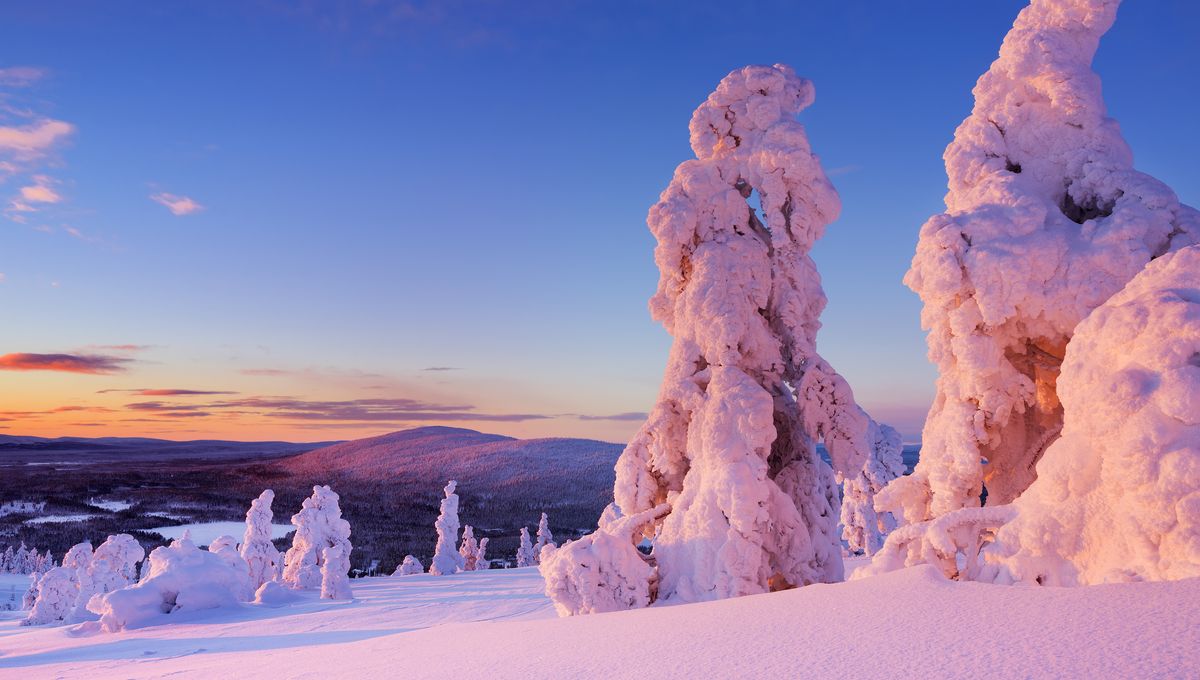
Money doesn’t grow on trees, so the old saying goes, but gold just might on the Christmas trees of Lapland. In a new study, scientists have uncovered a clear link between bacteria living in Norway spruce needles and the formation of gold nanoparticles. If harnessed correctly, this knowledge could help guide gold hunters to hidden fortunes.
Trace amounts of metals can accumulate in plant tissues through a process known as biomineralization, in which microbes and oxidation help metal ions travel from the soil, up through stems, and into leaves.
And gold is no exception. It’s well-known that certain tree species, such as some eucalyptus species in Australia, can build up microscopic amounts of gold into their leaves thanks to their ultra-slinky roots that bury deep into gold-rich soils of sediment.
However, the exact process of this biomineralization process is not crystal clear, and it’s uncertain why it occurs in some individual plants but not in others.
Digging into the mystery, researchers from the University of Oulu in Finland collected 138 needle samples from 23 Norway spruce trees (Picea abies) found near the Kittilä gold mine, Europe’s largest gold mine, in the Lapland region of northern Finland.
In just four trees, gold nanoparticles were found embedded inside the needles, surrounded by bacterial biofilms. DNA sequencing of these biofilms revealed that gold-rich needles were especially abundant in bacterial groups such as P3OB-42, Cutibacterium, and Corynebacterium. These bacteria, they believe, could be the key.
“Our results suggest that bacteria and other microbes living inside plants may influence the accumulation of gold in trees,” Dr Kaisa Lehosmaa, first study author and postdoctoral researcher from the University of Oulu, said in a statement.
“Our recent study provides preliminary evidence of how gold moves into plant shoots and how gold nanoparticles can form inside needles,” Lehosmaa explained. “In the soil, gold is present in a soluble, liquid form. Carried by water, the gold moves into spruce needles. The tree’s microbes can then precipitate this soluble gold back into solid, nanosized particles.”
To reiterate: these particles are a few nanometers in size – barely big enough to make a nice bracelet for a bacterium. Even in abundant numbers, these gold nanoparticles won’t be worth a whole lot of money.
That said, the gold-leaching abilities of trees could potentially lead you to great fortune. In 2019, a mineral exploration company called Marmota used tiny leaves to tip them off that the trees were sitting above a gold deposit. According to New Scientist, their efforts led them to an underground vein, 6 meters (19.7 feet) thick, containing 3.4 grams of gold per ton.
The spruce trees in this latest study are located near a known deposit of gold, but the researchers believe their work could be used to guide future exploration efforts.
“This suggests that these specific spruce-associated bacteria can help transform soluble gold into solid particles inside the needles. This insight is useful, since screening for such bacteria in plant leaves may facilitate gold exploration,” explained Lehosmaa.
The study is published in the journal Environmental Microbiome.
Source Link: Gold Literally Grows On Christmas Trees In Lapland